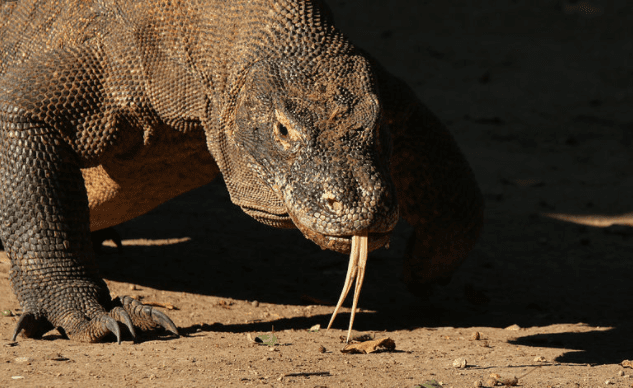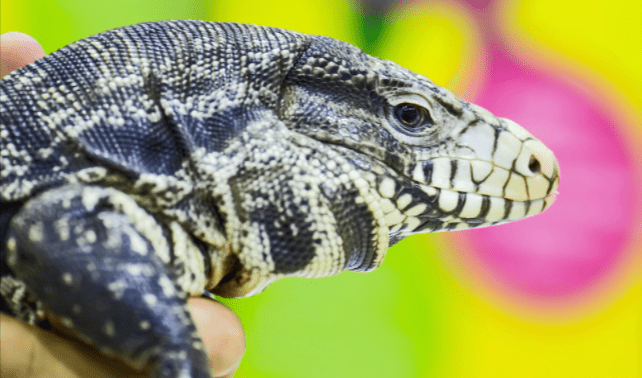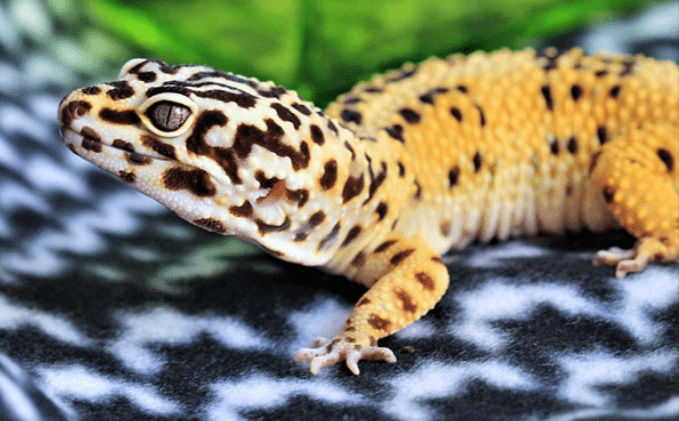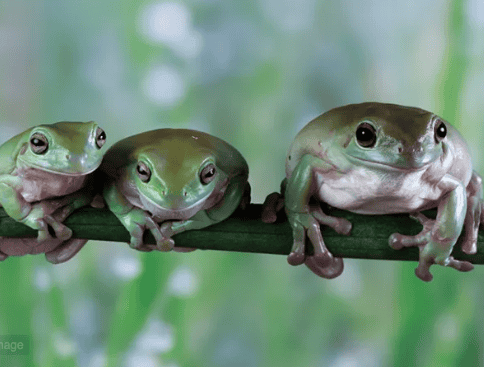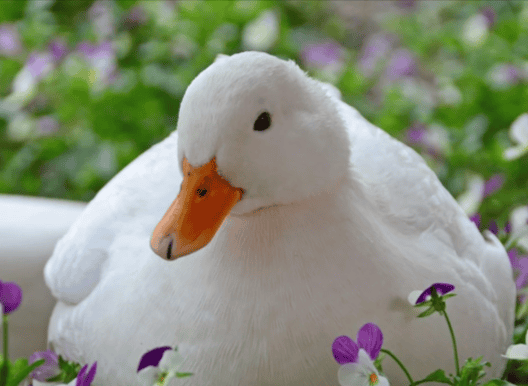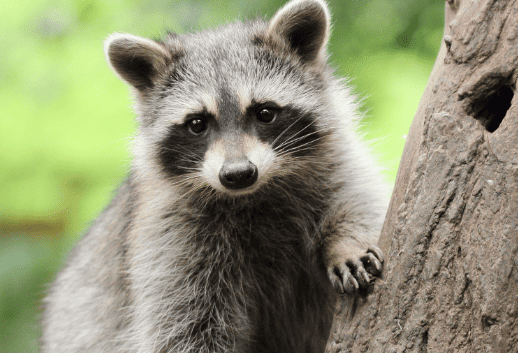The first time I saw a Bearded Dragon shed its skin was at my sister-in-law’s house.
The flaking skin was separating off of his back and revealed a multitude of oranges and pinks layered within his new rubbery spiked scales. The vibrancy of this new skin was so memorable, it was the first time I had ever really considered having a reptile for a pet.
Reptiles are a great unique and hypoallergenic option for pet owners, and in some cases, they are lower maintenance than our furry friends. Here are some of the best reptiles that you can adopt as a pet.
1. Chameleon
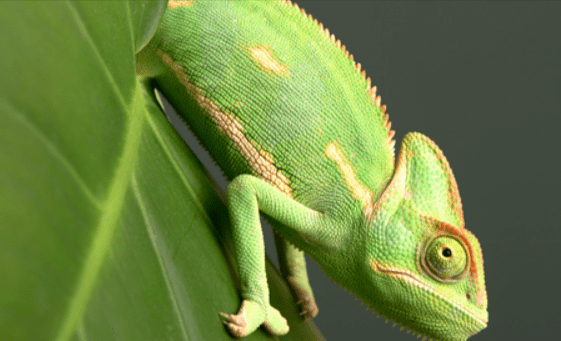
Chameleons belong to the Iguana family, and there are over 170 different species. They are amazing and fascinating creatures with the ability to change their skin color.
It’s a common misconception that a chameleon’s skin color changes to help blend into its surroundings.
A chameleon more often changes its skin color as a form of communication, with different colors representing the mood the chameleon is in.
Chameleons are best kept alone. They are territorial animals and can be aggressive if forced to cohabitate with another reptile.
Chameleons need a large enclosure with ample foliage to match their natural tropical habitat. They get all of their hydration from droplets on the foliage, so be sure to mist inside of the enclosure regularly.
Check what insect your species of chameleon likes best, then sit back and enjoy the color show.
2. Chinese Water Dragon
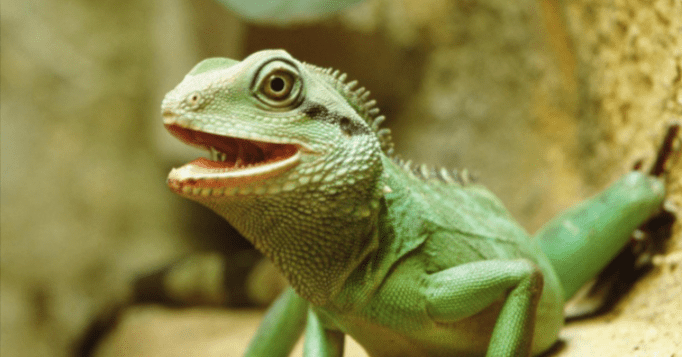
Who doesn’t want a pet dragon?
While they are obviously not real dragons, these lizards are very social, and some people compare their personalities to be similar to a dog.
If let out of their enclosure, they love to explore and chew on things in a charming nondestructive way. The more time you spend with your Chinese Water Dragon, the more comfortable it will become with you. They might just hop into your hands or lap if let out of their enclosure.
Males cannot be in the same enclosure with one another, they can be aggressive and territorial, however, two females will cohabitate peacefully.
They can live up to twenty years with a large enclosure.
Be sure that there is plenty of water in the enclosure; the Chinese Water Dragon’s natural environment is often near streams and rivers
3. Bearded Dragon
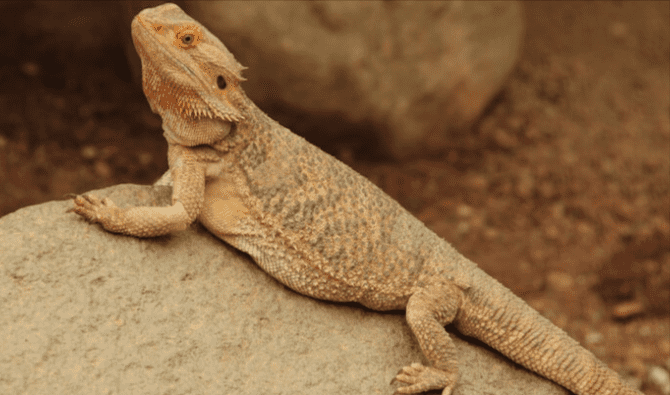
Warmly referred to as “Beardies”, Bearded Dragons are some of the most popular reptilian pets.
Their gentle and inquisitive nature make for a great addition to any household. The spiny scales that stick out from under their chins can be used for communication; when threatened, the Bearded Dragon will puff out the underneath of their chins to make themselves look larger.
They also communicate and control their body temperature by bopping their heads and changing the color of their beards.
Bearded Dragons are not picky eaters. As omnivores, they will eat anything from insects and small rodents to fruits, vegetables, and flowers.
They are native to much of Australia’s outback and prefer a warm and dry enclosure. You can observe their hibernation period in the fall and winter, where they do not eat, and drink water only seldomly.
4. Crested Gecko
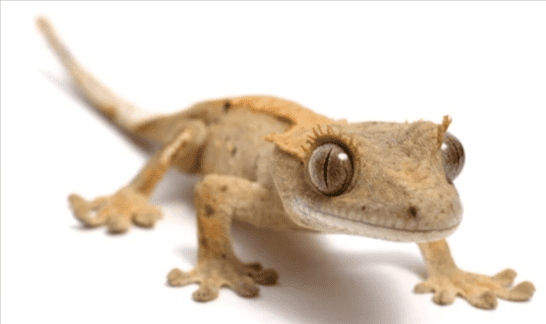
Nicknamed “Eyelash” for the ridges and scales located on their upper eyelid, these reptiles are never identical to others of the same species.
The fine hairs on the bottoms of their feet allow them to defy gravity while climbing vertically, which comes in handy for these arboreal reptiles.
They are quite vocal animals when they are stressed or uncomfortable, which can make them easier to care for. They are relatively docile, but can be skittish as well, so be careful when handling them.
A tall tank is preferred for these geckos, with one side screened for ventilation. They love to climb, so be sure to include an array of branches, driftwood, and vines of different height variations.
5. Ball Python
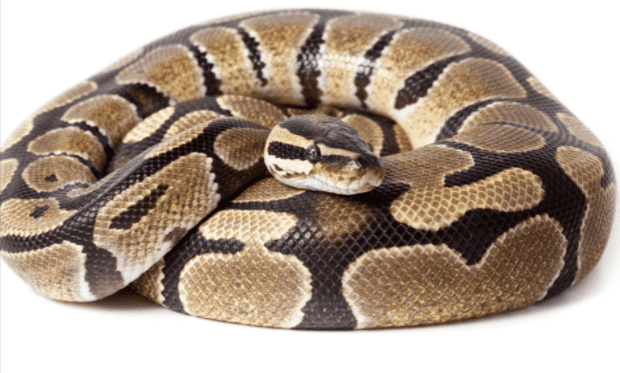
Having a pet snake can be pretty cool, but if you’ve never had one before, it’s probably best to start with a ball python.
The ball python is a good beginner snake since it is not as large as other snakes and is relatively easy to handle. The snake grows to about 2 to 5 feet long and is quite calm.
It’s also a low-maintenance pet as you only need to feed them every week or two, and depending on its age, you can keep it in a 10 to 30-gallon tank.
You’ve got a longtime friend in the ball python, as it can live up to 30 years!
6. Corn Snake
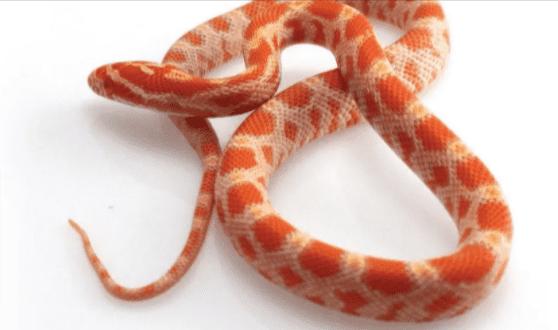
The corn snake is another slithering companion who is small in size, but big in personality.
The corn snake is known for its beautiful pattern of scales that resembles actual corn, and they happen to be great escape artists.
This snake can grow up to 4 to 6 feet long and lives for about 20 years, only needing food every one to two weeks.
A 20-gallon long glass tank is perfect for this snake, be sure to give your little escape artist a place to hide!
7. Eastern Box Turtles
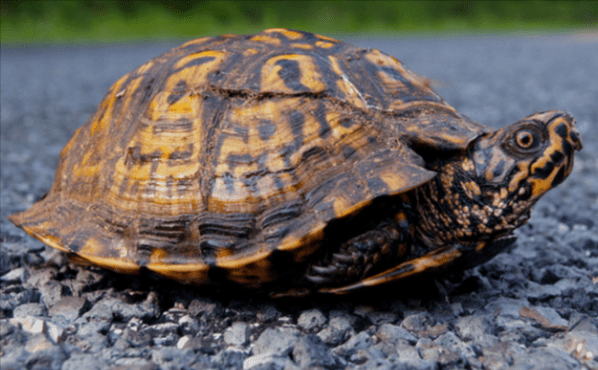
If you’d rather a pet who can keep you on your toes – by actually being on theirs – perhaps you want a cute, crawling turtle!
Eastern box turtles are very social creatures, they’ll even recognize your voice and beg for food. They should be fed every 24 hours, with a diet consisting of veggies and low-fat proteins.
Eastern box turtles live in a multitude of different habitats, so their adaptability to an environment makes them pretty easy to house – they aren’t picky!
While you may be inclined to cuddle your crawly creature, they get a little stressed if they are handled too often.
8. Leopard Gecko
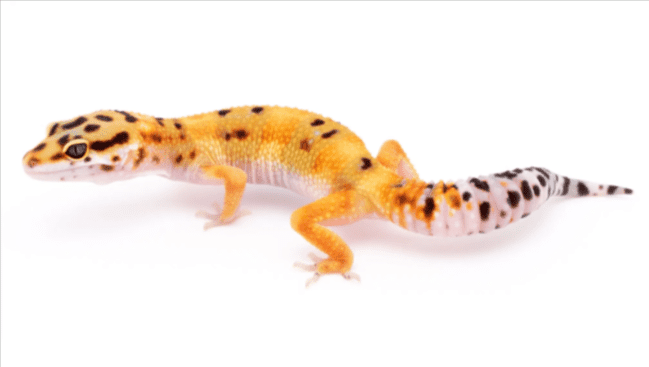
A popular beginner’s lizard, the leopard gecko is a beautiful reptile that varies in colors and patterns.
This little leopard grows to be 8 to 10 inches long and lives for about 20 years in captivity.
They are very calm in nature, easy to care for and move slowly.
Don’t be fooled by their slow speed or docility, these lizards are quite vocal. They often make chirps and squeaks, and even communicate with their rattling tails!
If you thrive as a night owl, then you’ve met your match because these little guys are nocturnal.
9. Russian Tortoise
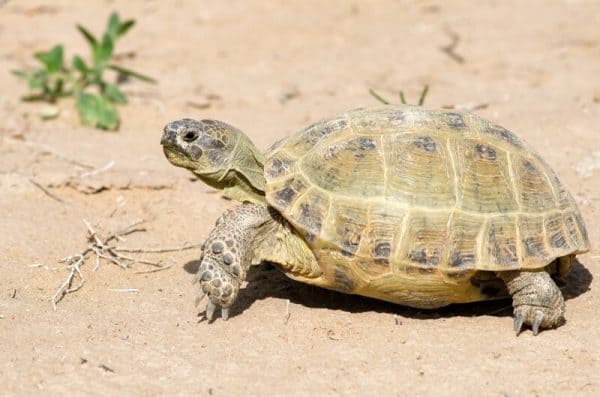
Russian tortoises are a great beginner reptile! They are small for a tortoise as they only grow to be 8-10 inches and can handle extreme temperatures.
These cold-blooded critters are perfect if you are looking for a pet with a long lifespan because they can live up to 40 years!
If you live in a warmer climate they prefer an outdoor enclosure that is at least 2 feet by 4 feet. Make sure their enclosure is set into the ground at least 6-12 inches to prevent them from digging under.
Russian tortoises are burrowers and tend to dig at corners and against boxes. You can also place rocks at the corners of their enclosures to stop them from digging out and provide underground hide boxes to prevent over-burrowing.
However, they do not enjoy being handled as it causes them stress, making them unideal for families with young children.
10. Blue Tongue Skink
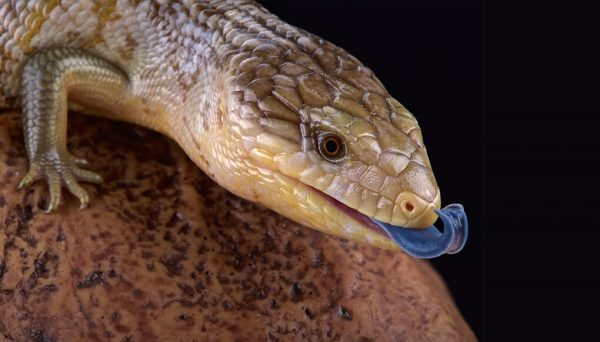
Blue tongue skinks are the perfect beginner reptile because they love to be handled. These easy-to-care-for lizards are named for their bright blue tongue and typically live about 15-20 years.
Blue Tongue Skinks can grow up to 20 inches long, so be sure to provide a large enclosure like a 40–55-gallon tank. These docile creatures enjoy warm temperatures and full spectrum UVA/UVB lighting.
They are not nocturnal and can even enjoy hanging with their humans outside of the tank!
Despite their larger size, these critters are great for families with children due to their gentle nature.
11. Argentine Black & White Tegu
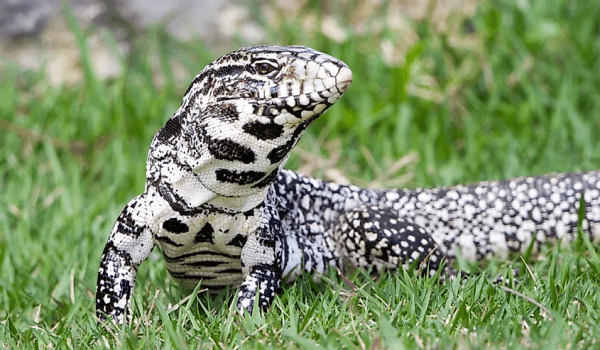
Argentine black and white tegus are handling friendly and highly intelligent creatures. Some call their behavior “dog-like” due to their ability to be trained and potentially be allowed to roam around their human’s house.
(Just be aware if you have other animals).
They can grow up to 4 feet in length and live 15-20 years. These critters are diurnal, meaning they are active during the day, and enjoy soaking so provide them a large shallow water dish.
Argentine black and white tegus do need interaction and socialization to prevent aggression.
What is the Friendliest Reptile for a Pet?
The Bearded Dragon is one of the most popular reptilian pets because of their friendly and tame demeanor, despite all of the spiky scales. They are not bothered by regular handling and can make a great companion.
These lizards are perfect for your young one’s first reptilian friend. They are extremely friendly and social, often becoming very comfortable with their owner.
What is the Easiest Pet Reptile to Take Care of?
Once again, the Bearded Dragon takes center stage. These lizards are hardy and will eat just about anything.
Keep their enclosure dry, warm, and clean and the Bearded dragon will be happy.
Do Lizards Get Attached to Their Owners?
You might find yourself wondering, “does my lizard like me?”
While experts aren’t sure if reptiles can bond with humans, that doesn’t mean your reptilian friend won’t enjoy your presence! Your lizard can definitely be comfortable with you, and even recognize you or your voice.
A great sign is if your lizard will let you feed them by hand without biting you. Your lizard may stare at you because it is curious and interested in you.
Handling your lizard can also build trust and connection. Different types of lizards have different behaviors; some may not be that social while some will curl up and sleep with you!
Remember that each lizard has its own unique personality, and what matters is that you have a connection to your lizard!
What Reptiles Like to Be Held?
Reptiles featured on this list including the blue tongue skink, water dragon, and Argentine black and white tegu all like to be held, as long as they were socialized properly when young.
Other reptiles that like to be held include certain types of snakes such as the ball python and corn snake, and lizards like bearded dragons and leopard geckos. Green iguanas and red-eared sliders also enjoy being handled.
Make sure you understand a reptile’s docility and handling needs prior to purchasing to ensure your critter has a healthy, stress-free life.
Is It Cruel to Keep Reptiles As Pets?
Like any pet, if you properly care for them, it is not cruel. However, many reptiles that are sold as pets were either wild-caught and imported or captive-bred.
Although you may fear ethical dilemmas when debating your purchase, you can research your breeder to confirm they are reputable.
Reptiles make great companions, but they do require some responsibility so make sure to treat your animal well by providing an adequate living space, diet, and care.
Make sure to research specifics about your breed, as some require more care than others. Reptiles are great pets to have and are well worth the additional research to learn about proper care!
